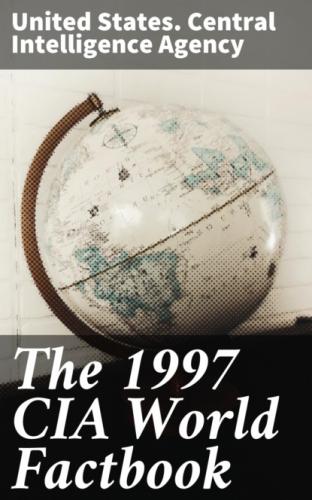Imports: total value : $65.8 billion (1996 est.) commodities: petroleum, foodstuffs, machinery and equipment, vehicles, chemicals, textiles and clothing, pharmaceuticals partners: EU 68.4% (Germany 40%, Italy 8.8%), Eastern Europe 6.55%, Japan 4.3%, US 4.4% (1994)
Debt - external: $30.2 billion (1996 est.)
Economic aid: donor: ODA, $544 million (1993)
Currency: 1 Austrian schilling (AS) = 100 groschen
Exchange rates: Austrian schillings (AS) per US$1 - 11.302 (January 1997), 10.587 (1996), 10.081 (1995), 11.422 (1994), 11.632 (1993), 10.989 (1992)
Fiscal year: calendar year
@Austria:Communications
Telephones: 3.47 million (1986 est.)
Telephone system: domestic: highly developed and efficient international : satellite earth stations - 2 Intelsat (1 Atlantic Ocean and 1 Indian Ocean) and 2 Eutelsat
Radio broadcast stations: AM 6, FM 21 (repeaters 545), shortwave 0
Radios: NA
Television broadcast stations: 47 (repeaters 870)
Televisions: 2,418,584 (1984 est.)
@Austria:Transportation
Railways: total : 5,624 km standard gauge: 5,269 km 1.435-m gauge (3,263 km electrified) narrow gauge: 355 km 1.000-m and 0.760-m gauge (86 km electrified) (1995)
Highways: 200,000 km paved: 200,000 km (including 1,596 km of expressways) unpaved: 0 km (1995 est.)
Waterways: 446 km
Pipelines: crude oil 554 km; petroleum products 171 km; natural gas 2,611 km
Ports and harbors: Linz, Vienna
Merchant marine: total: 28 ships (1,000 GRT or over) totaling 84,623 GRT/116,682 DWT ships by type: bulk 1, cargo 22, combination bulk 2, container 1, refrigerated cargo 2 (1996 est.)
Airports: 55 (1996 est.)
Airports - with paved runways: total: 51 over 3,047 m: 1 2,438 to 3,047 m : 5 1,524 to 2,437 m: 1 914 to 1,523 m: 3 under 914 m: 41 (1996 est.)
Airports - with unpaved runways: total: 4 914 to 1,523 m : 4 (1996 est.)
Heliports: 1 (1996 est.)
Military
Military branches: Army (includes Flying Division)
Military manpower - military age: 19 years of age
Military manpower - availability: males age 15–49: 2,107,905 (1997 est.)
Military manpower - fit for military service: males: 1,754,823 (1997 est.)
Military manpower - reaching military age annually: males: 46,298 (1997 est.)
Military expenditures - dollar figure: $2.1 billion (1995)
Military expenditures - percent of GDP: 1% (1995)
Transnational Issues
Disputes - international: none
Illicit drugs: transshipment point for Southwest Asian heroin and South American cocaine destined for Western Europe ______________________________________________________________________
AZERBAIJAN
Introduction
Current issues: Azerbaijan continues to be plagued by an unresolved nine-year-old conflict with Armenian separatists over its Nagorno-Karabakh region. The Karabakh Armenians have declared independence and seized almost 20% of the country's territory, creating almost 1 million Azerbaijani refugees in the process. Both sides have generally observed a Russian-mediated cease-fire in place since May 1994, and support the OSCE-mediated peace process, now entering its fifth year. Nevertheless, Baku and Xankandi (Stepanakert, Nagorno-Karabakh region) remain far apart on most substantive issues from the placement and composition of a peacekeeping force to the enclave's ultimate political status, and prospects for a negotiated settlement remain dim.
@Azerbaijan:Geography
Location: Southwestern Asia, bordering the Caspian Sea, between Iran and Russia
Geographic coordinates: 40 30 N, 47 30 E
Map references: Commonwealth of Independent States
Area: total: 86,600 sq km land: 86,100 sq km water: 500 sq km note: includes the exclave of Naxcivan Autonomous Republic and the Nagorno-Karabakh region; the region's autonomy was abolished by Azerbaijani Supreme Soviet on 26 November 1991
Area - comparative: slightly smaller than Maine
Land boundaries: total: 2,013 km border countries : Armenia (with Azerbaijan-proper) 566 km, Armenia (with Azerbaijan-Naxcivan exclave) 221 km, Georgia 322 km, Iran (with Azerbaijan-proper) 432 km, Iran (with Azerbaijan-Naxcivan exclave) 179 km, Russia 284 km, Turkey 9 km
Coastline: 0 km (landlocked) note: Azerbaijan borders the Caspian Sea (800 km, est.)
Maritime claims: none (landlocked)
Climate: dry, semiarid steppe
Terrain: large, flat Kur-Araz Lowland (much of it below sea level) with Great Caucasus Mountains to the north, Qarabag (Karabakh) Upland in west; Baku lies on Abseron (Apsheron) Peninsula that juts into Caspian Sea
Elevation extremes: lowest point : Caspian Sea −28 m highest point: Bazarduzu Dagi 4,485 m
Natural resources: petroleum, natural gas, iron ore, nonferrous metals, alumina
Land use: arable land: 18% permanent crops: 5% permanent pastures: 25% forests and woodland: 11% other : 41% (1993 est.)
Irrigated land: 10,000 sq km (1993 est.)
Natural hazards: droughts; some lowland areas threatened by rising levels of the Caspian Sea
Environment - current issues: local scientists consider the Abseron (Apsheron) Peninsula (including Baku and Sumqayit) and the Caspian Sea to be the ecologically most devastated area in the world because of severe air, water, and soil pollution; soil pollution results from the use of DDT as a pesticide and also from toxic defoliants used in the production of cotton
Environment - international agreements: party to: Climate Change, Ozone Layer Protection signed, but not ratified: Biodiversity
Geography - note: landlocked
@Azerbaijan:People
Population: 7,797,476 (July 1997 est.)
Age structure: 0–14 years: 33% (male 1,302,759; female 1,247,868) 15–64 years: 61% (male 2,315,272; female 2,446,087) 65 years and over: 6% (male 186,699; female 298,791) (July 1997 est.)
Population growth rate: 0.78% (1997 est.)
Birth rate: 22.89 births/1,000 population (1997 est.)
Death rate: 9.32 deaths/1,000 population (1997 est.)
Net migration rate: −5.75 migrant(s)/1,000 population (1997 est.)
Sex ratio: at birth: 1.05 male(s)/female under 15 years: 1.04 male(s)/female 15–64 years: 0.95 male(s)/female 65 years and over: 0.62 male(s)/female total population: 0.95 male(s)/female (1997 est.)
Infant mortality rate: 80.7 deaths/1,000 live births (1997 est.)
Life expectancy at birth: total population: 63.52 years male : 59.27 years female: 67.99 years (1997 est.)
Total fertility rate: 2.77 children born/woman (1997 est.)
Nationality: noun : Azerbaijani(s) adjective: Azerbaijani
Ethnic groups: Azeri 90%, Dagestani Peoples 3.2%, Russian 2.5%, Armenian 2.3%,
